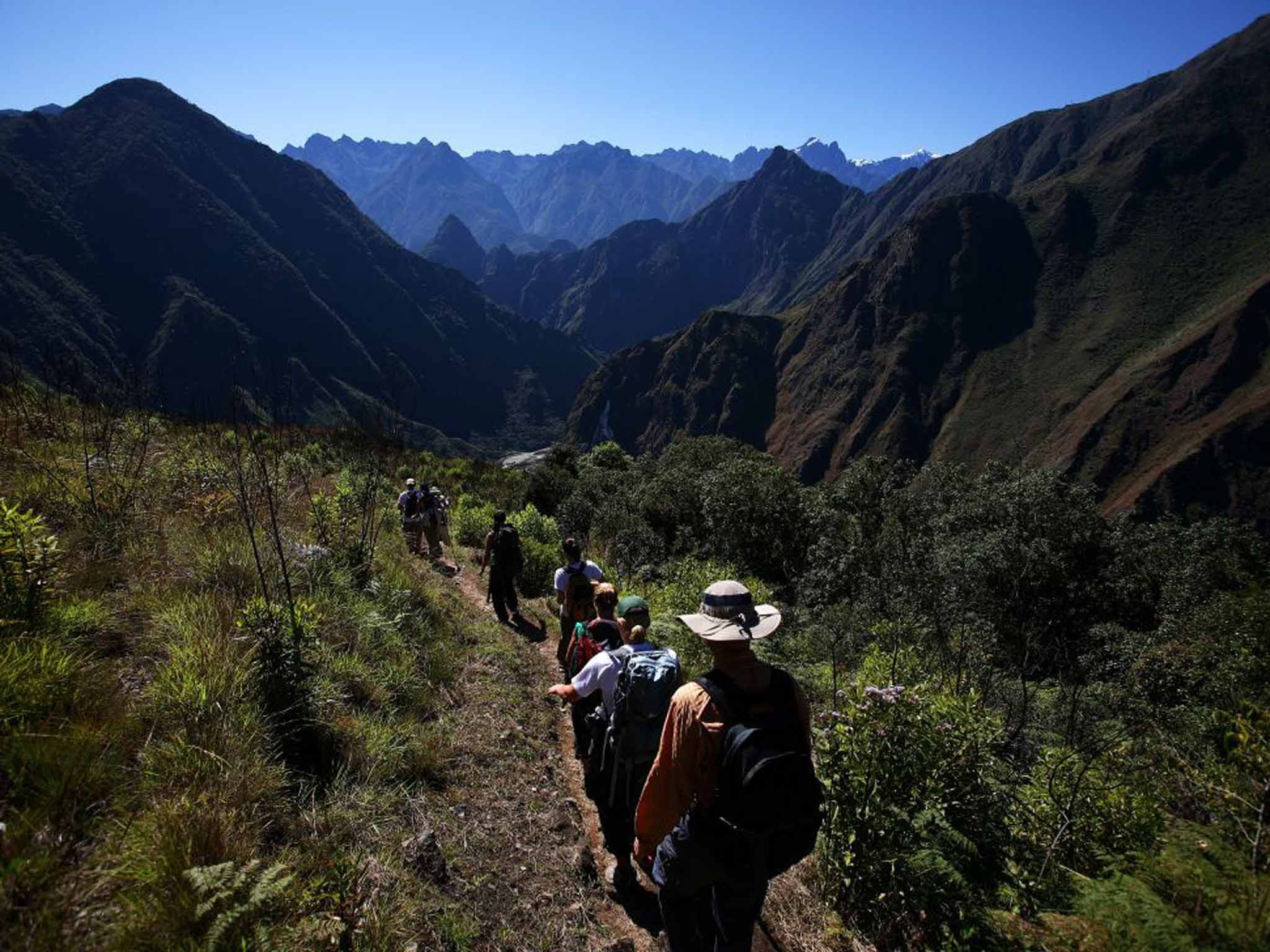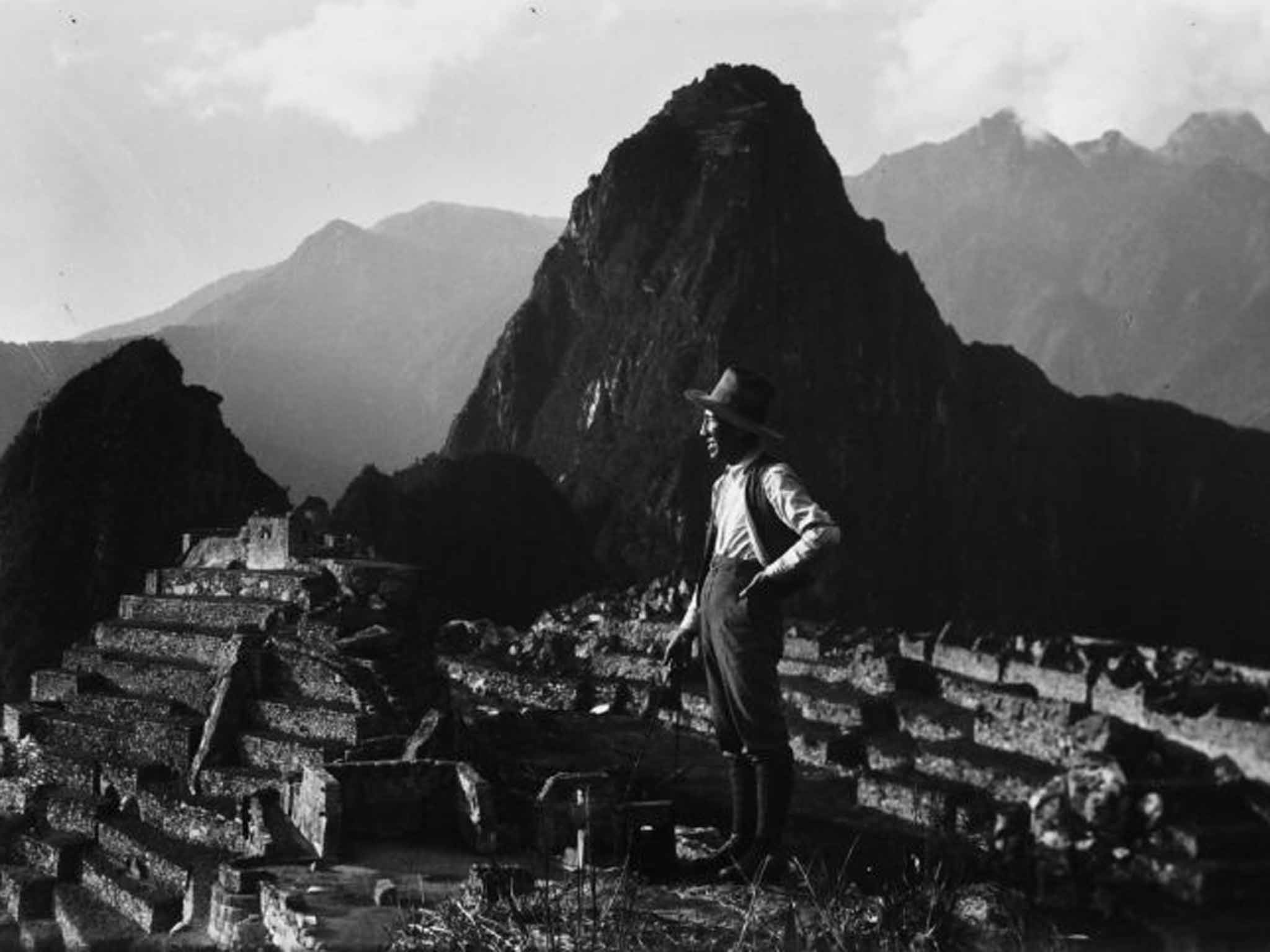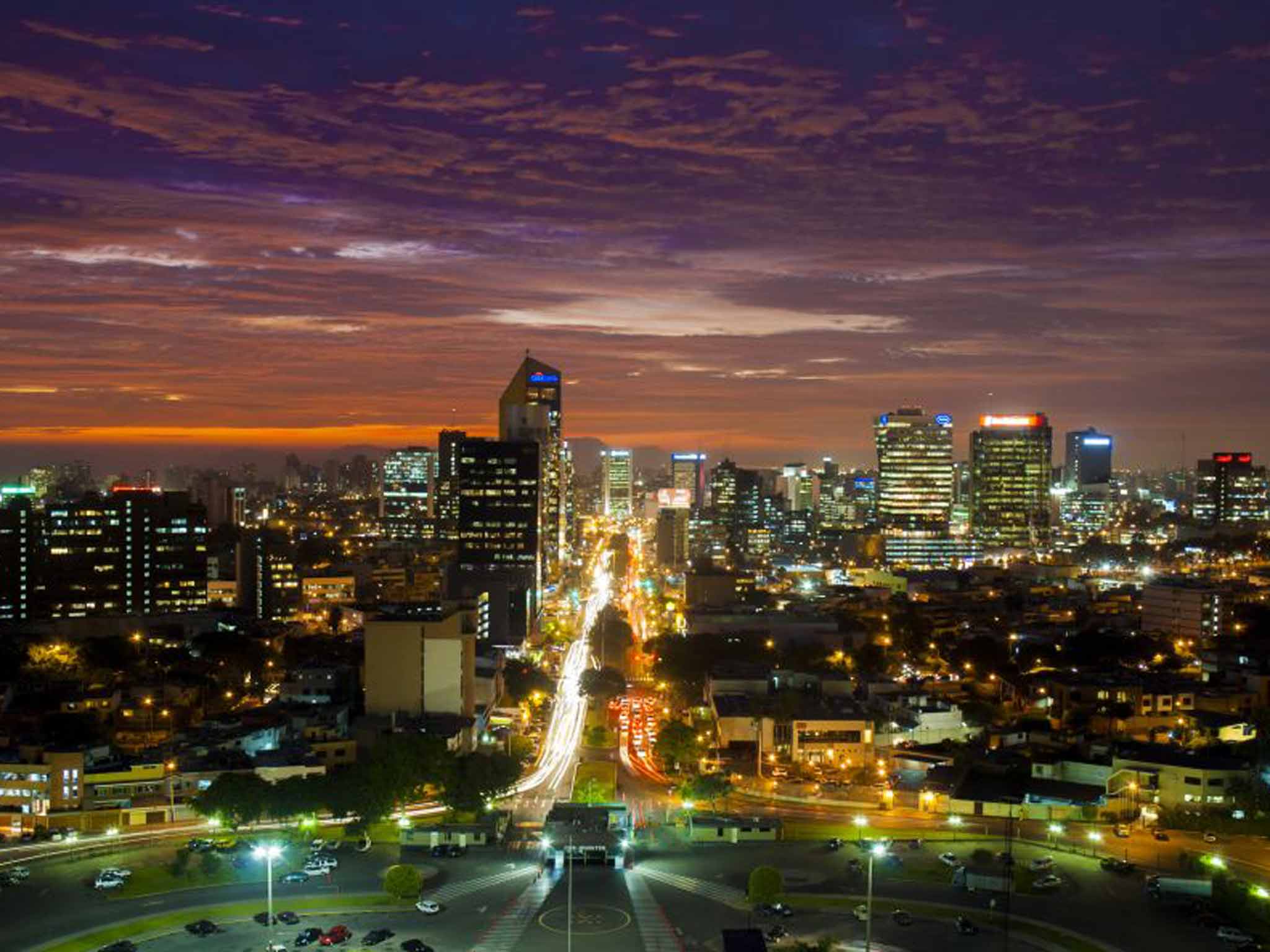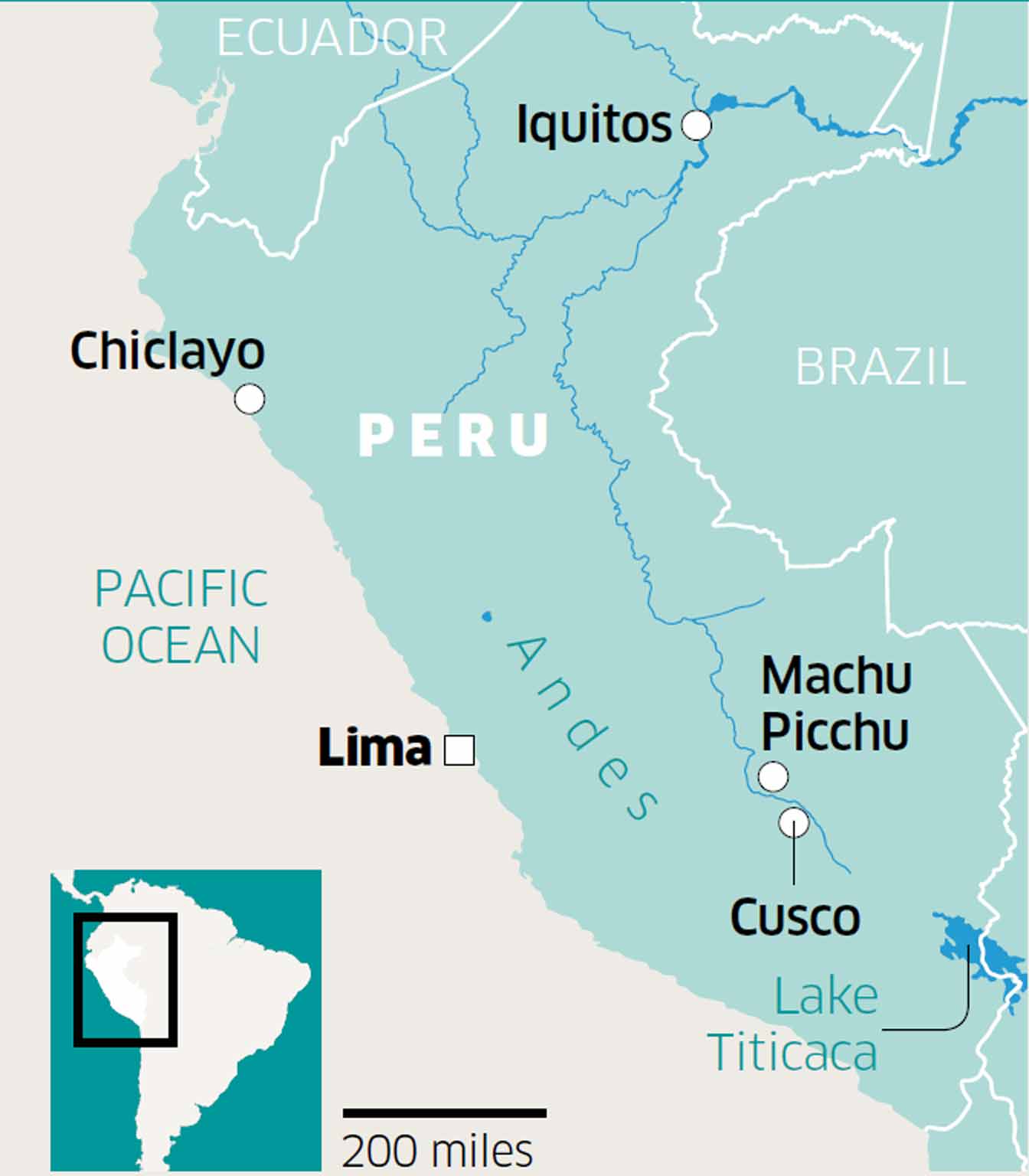The Independent's journalism is supported by our readers. When you purchase through links on our site, we may earn commission.
Photographing Peru: How Martin Chambi unveiled his country to the world
Mario Testino might be Peru's best-known photographer, but a retrospective exhibition reveals the impact of Martin Chambi in publicising its indigenous culture. Andrew Eames follows in his footsteps

Your support helps us to tell the story
From reproductive rights to climate change to Big Tech, The Independent is on the ground when the story is developing. Whether it's investigating the financials of Elon Musk's pro-Trump PAC or producing our latest documentary, 'The A Word', which shines a light on the American women fighting for reproductive rights, we know how important it is to parse out the facts from the messaging.
At such a critical moment in US history, we need reporters on the ground. Your donation allows us to keep sending journalists to speak to both sides of the story.
The Independent is trusted by Americans across the entire political spectrum. And unlike many other quality news outlets, we choose not to lock Americans out of our reporting and analysis with paywalls. We believe quality journalism should be available to everyone, paid for by those who can afford it.
Your support makes all the difference.So, this is Peru, the land of Incas and alpacas, of condors and cordilleras. Why, then, am I standing in a gallery surrounded by huge images of Princess Diana? Giant black and white prints of a doe-eyed Di, seeking approbation from the camera, in a dozen celebrated photographs taken just two months before she died? Peru is the last place you'd expect to find a shrine to the People's Princess.
But this is not some kind of cargo cult. This is MATE, the Museo Mario Testino in the Peruvian capital, Lima. It's a smart gallery where no expense has been spared in displaying the best work of the eponymous Peruvian-born, London-based fashion photographer. For me, Testino's Diana images are a side issue, but they are here because they made him famous; in other rooms there are images of Madonna and Kate Moss, but they are not what I am here for either.
I am most interested in Testino's stylised Alta Moda (i.e. "high" fashion) images of Quechua mountain people, the descendants of the Incas, in their brightly-coloured traditional dress, holding flutes and wearing what look like giant mops on their heads. They are standing against an old-fashioned photographer's backdrop that was used by Testino's less well-known but talented antecedent Martin Chambi. A man who, I was later to find out, also has a British connection that kick-started his career.
By using the backdrop, Testino is tipping his hat to Chambi. And it is the latter, whose work back in the 1930s originally helped bring Peru's extraordinarily colourful indigenous culture to the attention of the outside world, who is my main motivation for being here.

Chambi is having a big retrospective exhibition in Lima's Museum of Art next month, but I'm too early for that, which means I'm going to have to go to his home town of Cusco to track them down.
These two photographers define very different sides of Peru. Testino represents the new world, down in the coastal capital, of a country released from the handbrake of bad presidents and Shining Path guerrillas, and now forging ahead. Up in the mountain city of Cusco, where tourists gather like salmon readying themselves for the arduous journey to one of the travel wonders of the world – the "lost" city of Machu Picchu – Chambi stands for the traditional, cultural, age-old Peru that attracted tourists here in the first place.
From the evidence of Lima – one of the fastest growing destination cities by international overnight visitors – Peru is in a good situation right now. On a cycling tour of the trendy Barranco district, I weave through joggers, dog-walkers and yoga enthusiasts, stopping off at a couple of the 20-odd art galleries that have opened to cater to the burgeoning middle class. Restaurant Central, on my route, has recently been voted the fourth best in the world in the World's 50 Best Restaurant list, and on the horizon I can see the freight ships queuing up to get their share of Peru's huge mineral wealth.
But Lima will never be a big tourism destination. The third most populous city in South America, it stretches for 100km along the coast, for the most part under a low and glowering grey sky which promises rain, but never, ever, delivers. Limeños call it living "under the belly of a donkey". So while this city is the nation's brawn and brain – and increasingly populated with some of the world's finest restaurants – Peru's soul is elsewhere.
A short flight from Lima's airport, I've stepped out into the Andes. Clear, thin air, an intense afternoon sun, vibrant colours, aged ochre stone. With its maze of lanes, conquistador cathedrals and plethora of travel agencies, Cusco feels a bit like a South American Kathmandu. At 3,400 metres, it is also the place where throngs of young travellers wait for their bodies to adjust to altitude, sitting in wi-fi-enabled coffeeshops, eating cake and updating their Facebook pages, before heading out on to the Inca Trail.
There's a local festival just coming to an end as I arrive, men in richly decorated chalecos and woollen ponchos weaving drunkenly out of the centre clutching their battered trumpets. My hotel, the Palacio Nazarenas, turns out to be a conversion of a convent built on the foundations of an Inca temple, a classically elegant place of courtyards and corridors, with woods and weaves, polishes and waxes, and a chapel covered wall to ceiling with religious paintings. There's a fresco above the bath and a hand-embroidered silk coverlet on the bed that I am almost scared to lie on, lest I get admonished by the ghost of a stern abbess.

The following day, I visit Martin Chambi's archive in the basement of a more modern block outside the centre. The man himself died in 1973, and his grandson, Teo, shows me his cameras and the boxes of some 30,000 negatives. He also tells me the story of how his grandfather, as a 15-year-old boy from a Quechua-speaking family, got a job with a mining company as a camera bearer, and it was the British photographer he worked for who first encouraged him to take his place behind the lens.
For the next 40 years he ranged all over the Andes collecting images, lugging a heavy plate camera and tripod over his shoulder. He documented the living conditions and the faces both of his own people and of the middle class Spanish-origin settlers who wanted the prestige of having their studio portraits done. For that work, he used the same backdrop as Testino later used in Lima.
The archive, though, doesn't have much in the way of large prints, so to see a good cross section of his work I seek out the big Chambi exhibition in the Scotiabank-occupied Palacio Tupac Yupanqui, built on Inca foundations in downtown Cusco. Several rooms, although poorly lit, show a wide selection. Quechua miners resting. Spanish-origin horsewomen posing in the woodland. A peasant family sitting on their potato harvest. A flute-playing porter with his llama behind him on a mountain top. A striking wedding photo with the lighting of a Dutch Master, complete with deeply worried-looking bride and groom and their nervous train. A document of a vanished world.
And then of course the obligatory photograph of Machu Picchu, like an engraving in black and white, from 1925, little more than a dozen years after it was first discovered by Hiram Bingham – with nobody there. It's an image that every traveller wants.
Two days later I am standing on the exact spot where that very photograph was taken. Although I haven't footslogged out along the Inca Trail, I am lucky enough to be there at dawn, thanks to the Belmond Sanctuary Lodge, just outside the entrance gates. So I get in with the first visitors at 6am, when the place is still buffered in a protective blanket of mist, blotting out the amphitheatre of Andean peaks which surround it.

Gradually, the slow climb of the sun lifts that morning petticoat, revealing an intricately-engineered secret city: Inca meets Escher in a labyrinth of hand-carved and hand-polished stones, in divisions and subdivisions with fountains and plazas for farmers and rulers and temples and nobody really knows what. Or even why such a perfectly-placed jewel of Inca geometry was abandoned so suddenly.
It's the sort of place that no photograph can do justice to, not even Chambi's. And it is not easy to do justice to it in writing, either.
There are disappointments, of course. Chambi's image doesn't communicate the shunting noises from the trains shuttling visitors in and out of Aguas Calientes, the transport hub down in the valley below. Or how all the site wardens are listening to the final of the Champion's League on their transistor radios (Barcelona 3-1).
Nor am I fully prepared for the avalanche of gap-year travellers entering from the Sun Gate, blazing away with selfie-sticks, calling everything "awesome", announcing that they are about to "do a pano" and checking with each other that "these were the Incas, right, the Mayans were the ones we saw in Honduras?"
I think of Chambi, lugging his heavy plate camera and tripod, the effort it must have taken to take his image from here. His one image went on to be admired by hundreds of thousands, maybe millions; now hundreds of thousands come here to take the same picture. For the admiration of the very few.
Getting there
Andrew Eames travelled to Peru courtesy of Belmond and TAM Airlines. A seven-day tour with Belmond (0845 0772 222, belmond.com), staying at the group's hotels in Lima, Cusco, the Sacred Valley, and at Machu Picchu, includes the Hiram Bingham train to Machu Picchu and guided visits to Lima Art Museum and MATE in Lima as well as the archive of Martin Chambi in Cusco. The price of £2,681pp includes transfers and accommodation, but it excludes international flights.
A return with TAM Airlines (0800 026 0728, tam.com.br) from Heathrow to Lima via Sao Paulo costs from £1,004.
British Airways (0844 493 0787; ba.com) launches non-stop flights from Gatwick to Lima next May.
More information
The Martin Chambi exhibition is at the Lima Art Museum (mali.pe) from the middle of October (martinchambi.org).
MATE, Lima (mate.pe).
Join our commenting forum
Join thought-provoking conversations, follow other Independent readers and see their replies
Comments